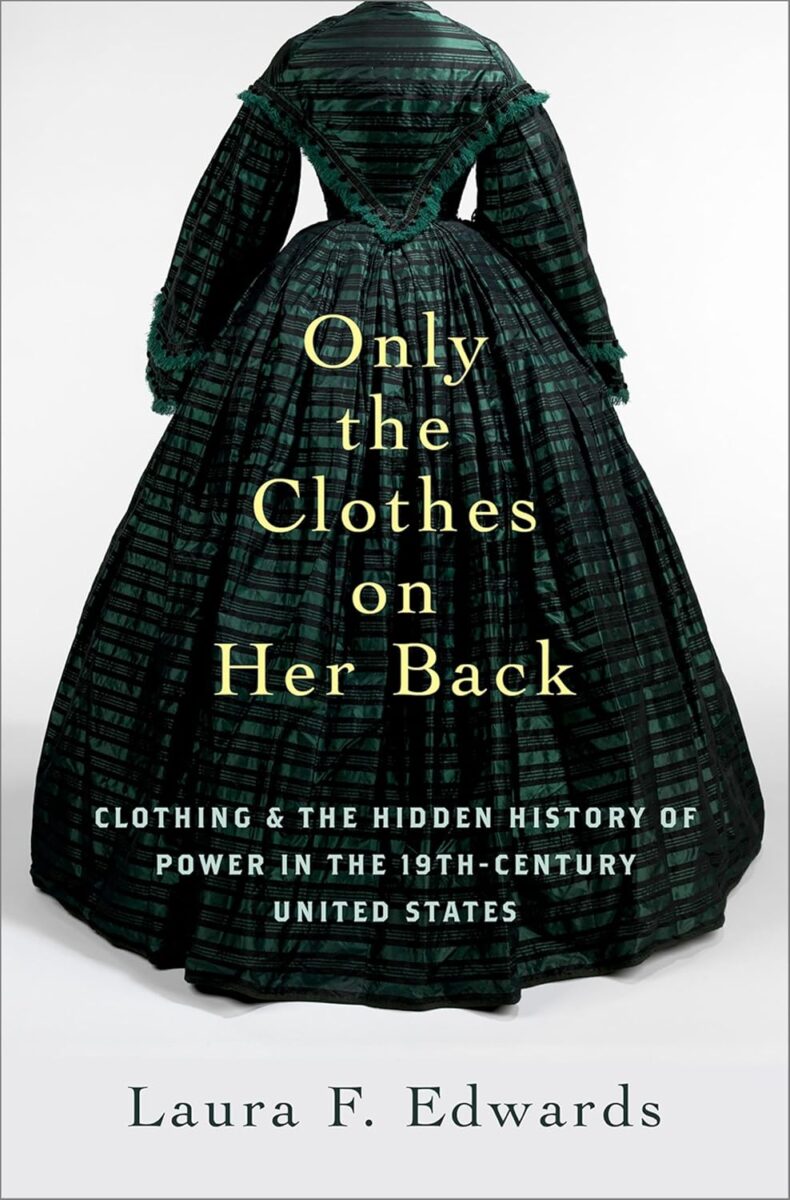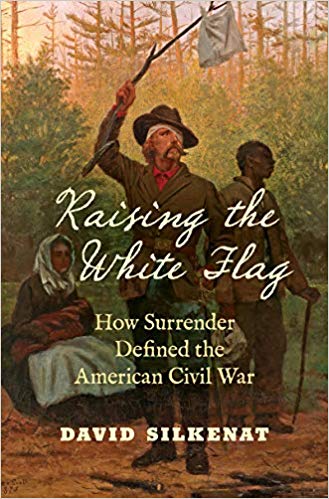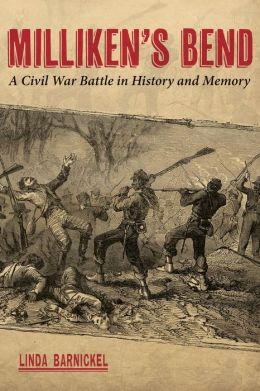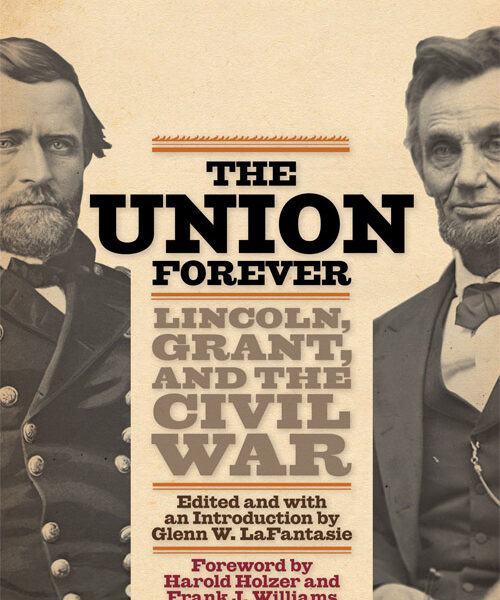Princeton University Professor Laura F. Edwards is best known for her sterling work on the legal history of the Civil War and Reconstruction eras. Her ability to vividly portray the changes that the Civil War brought to the American legal landscape has earned high praise from prize committees and professional organizations alike. Her latest work melds legal history with the history of material culture. It is a book about textiles—clothing, linens, shoes, and even cloth—the everyday objects that shaped the creation of laws and bolstered the political power of women in the nineteenth-century United States. Only the Clothes on Her Back is a novel and compelling work of legal history, written with clarity and verve, and deserving of a wide readership.
Textiles, Edwards writes, “gave people on the legal margins the institutional space to use and even expand on . . . legal principles and practices.” Whether poor, enslaved, or otherwise barred from exercising legal power, people could use textiles “to acquire and control property” or “enforce longstanding rules of exchange.” For Americans who would otherwise have had little reason to leverage the law to their advantage, textiles were an important way that marginal Americans “shaped the substance of the law and its legal practice” in the decades between the Revolution and the Civil War (4).
The book is organized into three parts. The first deals with textiles as goods and the laws and legal principles that attached to them. The second deals with the ways early Americans claimed and used textiles within their changing legal and economic systems. The third analyzes how laws and ideas about textiles influenced the federal system of government. In the decades that spanned the American Revolution to the Civil War, Edwards suggests, the law shifted from allowing marginal Americans to exercise their rights via textiles, to emphasizing individual rights which were granted only to white men with property. By examining textiles, then, Edwards argues that American law became far less capacious in defining who had rights between the founding era and the sectional crisis.
Important to the first section of Edwards’ book is the distinction between public and private law. The author admits that as with much of the history of the early United States, the distinctions that separated the two legal areas was fuzzy at best. As American jurisprudence began to develop, the country had not yet settled on how power would be distributed among the federal, state, and local governments. This meant that Americans who could not otherwise access legal recourse for crimes committed against them could seek recompense or justice by claiming to desire public order in their communities. Edwards provides multiple examples of surprising successes for marginalized people pursuing this legal strategy but is careful to remind readers that while such Americans may have found an ally in government authority, it was often “only for a fleeting moment” (57).
Some of the most compelling data that Edwards derives from her sources regards the degree to which textiles allowed women to connect to a worldwide marketplace of goods. Though they could not own businesses in their own names or receive lines of credit without the backing of their husbands, women could and did use textiles as currency and trade goods for their own benefit. Readers familiar with Jeanne Boydston’s Home and Work: Housework, Wages, and the Ideology of Labor in the Early Republic [Oxford, 1990] will find in Edwards more women using their work to fight against the idea that they were dependent on men, without any connection to markets, laws, or governments.
Of most interest to Civil War historians, however, will be the book’s arguments about the changing nature of federalism in the decades prior to the conflict. By examine textiles, Edwards can demonstrate that as the federal government began to define rights according to individual characteristics such as race or gender, older forms of engaging with the legal system disappeared for Americans who were not white, property-owning men. As civil rights were supposed to be expanding in the wake of emancipation, many Americans found themselves more distanced from the law and the federal government after the nation’s new birth of freedom.
Edwards is a master of evidence and of clarity. Though the book contains multiple, overlapping arguments, it is full of stories and characters that help the reader to engage with the lives and experiences of everyday Americans in the early republic. The volume, as published by Oxford University Press, is handsomely presented with copious notes and a thorough bibliography. Scholars looking for sources concerning the legal affairs of early Americans will find much to consult thanks to Edwards’s comprehensive research. Anyone interested in legal, social, economic, or political history will find Only the Clothes on Her Back a worthy addition to the literature of the Civil War era.
Cecily N. Zander is a Postdoctoral Fellow at The Center for Presidential History at Southern Methodist University.
Related topics: women





